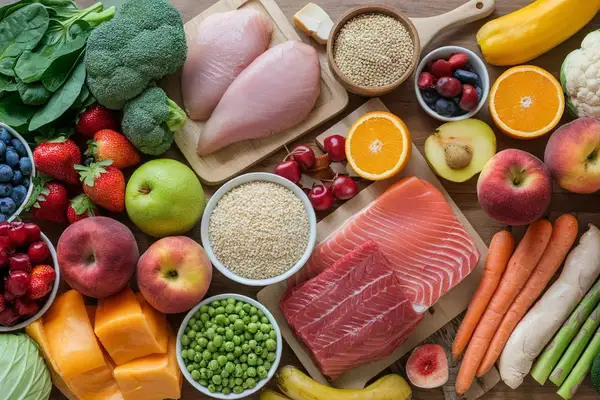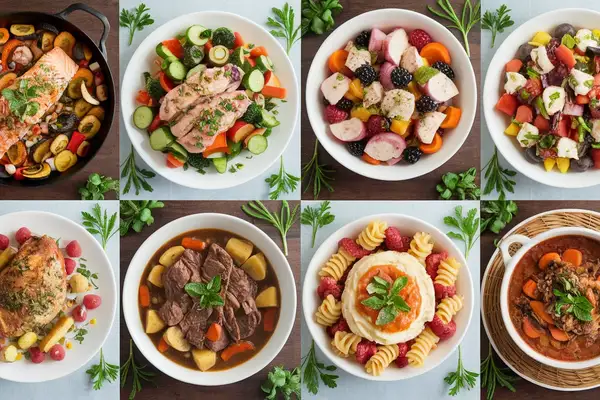7-Day GERD Diet Plan: Healthy Guide For Soothing Acid Reflux
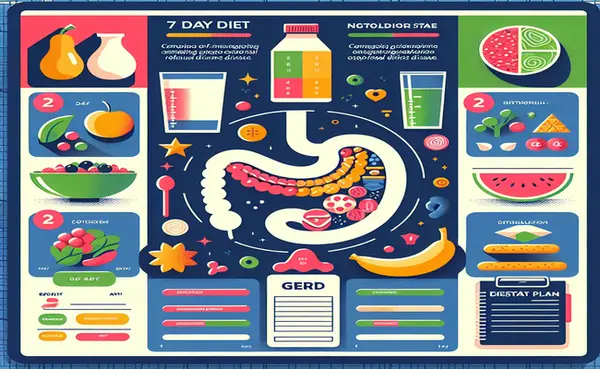
This post may contain affiliate links, meaning I may earn a commission if you make a purchase, at no extra cost to you. I only recommend products I trust. Thank you for your support.
Grappling with the discomfort of acid reflux can be an uphill battle, leaving you feeling helpless and uncertain about what to eat.
However, by embracing a well-structured 7-day GERD diet plan, you can pave the way for lasting relief and reclaim control over your digestive health.
A GERD diet plan or acid reflux diet plan focuses on reducing symptoms like heartburn, acid reflux, and indigestion by avoiding foods that trigger these symptoms and incorporating foods that are gentle on the stomach and esophagus.
While occasional acid reflux is normal, persistent occurrences may indicate GERD, which can lead to long-term complications if left untreated.
Common symptoms of GERD include:
- Heartburn: A burning discomfort in the chest or throat, often exacerbated after eating or lying down.
- Regurgitation: A sour or bitter taste in the mouth due to stomach contents backing up into the esophagus.
- Dysphagia: Difficulty swallowing or the sensation of food getting stuck in the throat.
- Chronic cough or hoarseness: Resulting from the irritation of the throat and vocal cords by stomach acid.
This comprehensive guide will equip you with a 7-day GERD diet plan, a list of foods to eat with acid reflux, and foods to avoid with GERD empowering you to make informed choices and alleviate those nagging symptoms once and for all.
7-Day GERD Diet Plan (GERD Menu)
The primary objective of a 7-day GERD diet plan is threefold:
- To alleviate reflux symptoms by eliminating foods that may relax the lower esophageal sphincter (LES)
- To limit irritants that can exacerbate the sensitive lining of the esophagus and stomach
- To minimize foods that delay stomach emptying.
This 7 day GERD diet plan vegetarian incorporates soothing and healing foods that can reinforce the protective mucosal layer, shielding the delicate cells of the esophagus and stomach lining.
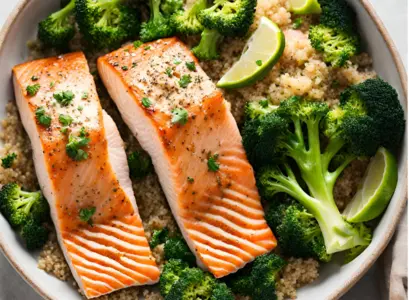
Day 1
Breakfast:
- Oatmeal with Banana and Almond Milk: 1 cup of cooked oatmeal, 1 cup of almond milk, 1 medium banana, 1 cup unsweetened almond milk
- Low-fat Yogurt: 1 cup low-fat plain yogurt, 1/4 cup blueberries
Lunch:
- Grilled Chicken Salad: 3 oz grilled chicken breast, 2 cups mixed greens (lettuce, spinach, arugula), 1/2 cup cherry tomatoes, 1/4 cup shredded carrots, 1 tablespoon olive oil and vinegar dressing
Dinner:
- Baked Salmon with Steamed Vegetables: 4 oz baked salmon, 1 cup steamed broccoli, 1/2 cup steamed carrots
- Stir-fried Tofu with Brown Rice: 1 cup of tofu, 1 cup of bell peppers, 1/2 cup of brown rice.
- Quinoa: 1/2 cup
Snacks:
- Carrot and Cucumber Sticks with Hummus: 1/2 cup carrot sticks, 1/2 cup cucumber sticks, 2 tablespoons hummus
- Apple Slices: 1 small apple, sliced

Day 2
Breakfast:
- Whole Grain Toast with Avocado: 2 slices whole grain toast, 1/2 avocado, mashed
Lunch:
- Turkey and Spinach Wrap: 1 whole wheat wrap, 3 oz sliced turkey breast, 1 cup fresh spinach, 1/4 cup shredded carrots, 1 tablespoon mustard
- Turkey and Avocado Wrap: 3 oz of turkey, 1/4 avocado, 1 whole wheat wrap, unlimited cucumber, and carrot sticks.
Dinner:
- Chicken Stir-Fry with Mixed Vegetables: 3 oz chicken breast, 1 cup mixed vegetables (bell peppers, broccoli, snap peas), 1 cup cooked brown rice, 1 tablespoon low-sodium soy sauce
- Quinoa Salad: 1 cup of quinoa, 1/2 cup of cherry tomatoes, 1/2 cup of cucumbers, 1 oz of feta cheese.
Snacks:
- Rice Cakes with Almond Butter: 2 rice cakes, 1 tablespoon almond butter
- Melon Slices: 1 cup melon (cantaloupe or honeydew), sliced
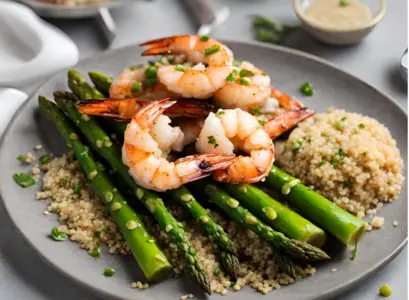
Day 3
Breakfast:
- Banana Smoothie: 1 cup almond milk, 1/2 cup frozen berries, 1 small banana, 1 tablespoon chia seeds
Lunch:
- Quinoa Salad: 1 cup cooked quinoa, 1/2 cup chickpeas, 1/4 cup diced cucumber, 1/4 cup diced bell peppers, 1 tablespoon olive oil and lemon juice dressing
Dinner:
- Turkey Meatloaf with Mashed Sweet Potatoes: 4 oz turkey meatloaf, 1 cup mashed sweet potatoes, 1 cup steamed green beans
- Grilled shrimp with Steamed Asparagus: 4 oz of shrimp, 1 cup of asparagus
- Wild Rice: 1/2 cup of wild rice.
Snacks:
- Apple Slices with Peanut Butter: 1 small apple, sliced, 1 tablespoon peanut butter
- Banana: 1 small banana
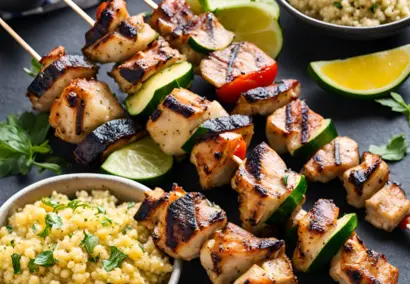
Day 4
Breakfast:
- Scrambled Eggs with Spinach: 2 eggs, scrambled, 1 cup fresh spinach, sautéed
- Greek Yogurt with Honey: 1 cup Greek yogurt, 1 teaspoon honey
Lunch:
- Grilled Vegetable and Hummus Sandwich: 2 slices whole grain bread, 1/2 cup grilled vegetables (zucchini, eggplant, bell peppers), 2 tablespoons hummus
Dinner:
- Baked Cod with Steamed Asparagus: 4 oz baked cod, 1 cup steamed asparagus, 1/2 cup brown rice
- Grilled Chicken kebabs with Zucchini and Couscous: 4 oz of chicken, 1 cup of zucchini, 1/2 cup of couscous.
Snacks:
- Mixed Berries: 1 cup mixed berries (strawberries, blueberries, raspberries)
- Pear Slices: 1 medium pear, sliced
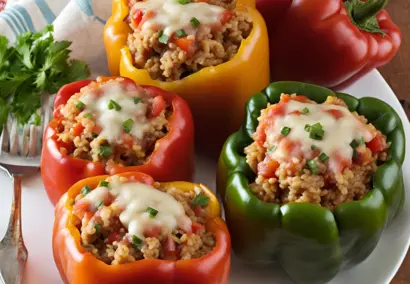
Day 5
Breakfast:
- Whole Grain Cereal with Almond Milk: 1 cup whole-grain cereal, 1 cup almond milk, 1/2 cup sliced strawberries
- Almonds: 1 cup of almonds
Lunch:
- Chicken and Avocado Salad: 3 oz grilled chicken breast, 1/2 avocado, sliced, 2 cups mixed greens, 1/4 cup shredded carrots, 1 tablespoon olive oil and lemon juice dressing
- Tuna Salad with Mixed Greens: 3 oz of tuna, unlimited mixed greens, 2 tbsp of balsamic vinaigrette.
Dinner:
- Stuffed Bell Peppers: 1 bell pepper, stuffed with 3 oz ground turkey, 1/2 cup cooked brown rice, 1/4 cup diced tomatoes
Snacks:
- Celery Sticks with Almond Butter: 1/2 cup celery sticks, 2 tablespoons almond butter
- Banana: 1 medium banana, sliced
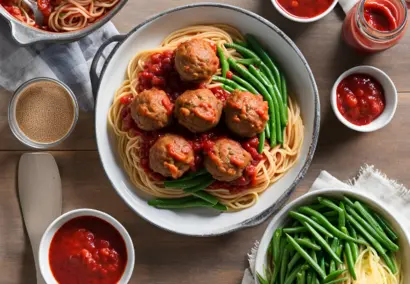
Day 6
Breakfast:
- Berry Smoothie Bowl: 1 cup almond milk, 1/2 cup frozen mixed berries, 1 small banana, 1 tablespoon chia seeds, 1/4 cup granola (topping)
- Baby Carrots: 1 cup baby carrots
Lunch:
- Tuna Salad: 3 oz canned tuna (in water), drained, 1/4 cup diced cucumber, 1/4 cup diced bell peppers, 1 tablespoon olive oil and vinegar dressing, 2 cups mixed greens
Dinner:
- Shrimp and Vegetable Stir-Fry: 4 oz shrimp, 1 cup mixed vegetables (bell peppers, snow peas, carrots), 1 cup cooked quinoa, 1 tablespoon low-sodium soy sauce
- Turkey Meatballs with Spaghetti Squash: 3 turkey meatballs, 1 cup of marinara sauce, 1 cup of spaghetti squash
Snacks:
- Trail Mix: 1/4 cup trail mix (nuts, seeds, dried fruit)
- Blackberries: 1 cup of blackberries

Day 7
Breakfast:
- Buckwheat Pancakes with Fresh Fruit: 2 small buckwheat pancakes, 1/2 cup sliced strawberries
- Rice Crackers: 5-6 rice crackers
Lunch:
- Lentil Soup: 1 cup lentil soup, 1 slice whole grain bread
- Spinach and Feta-stuffed Chicken Breast: 4 oz of chicken breast, 1/4 cup of spinach and feta stuffing, unlimited roasted carrots.
Dinner:
- Baked Chicken with Roasted Vegetables: 3 oz baked chicken breast, 1 cup roasted vegetables (zucchini, bell peppers, carrots), 1/2 cup cooked brown rice
- Veggie Stir-fry with Tofu: 1 cup of tofu, assorted vegetables, 1/2 cup of brown rice.
Snacks:
- Apple Slices: 1 small apple, sliced
- Cherries: 1 cup cherries
The Best Foods for GERD Disease
Incorporating GERD-friendly foods in the 7-day GERD diet plan can promote healing and alleviate discomfort.
These foods aim to reduce irritation, promote normal digestive motility, and support a healthy digestive environment.
The best foods for GERD disease or the list of foods to eat with acid reflux to include in a 7-day GERD diet plan are:
- Non-citrus fruits: Bananas, melons, berries, and apples
- Vegetables: Leafy greens, broccoli, cauliflower, and carrots
- Lean proteins: Skinless poultry, fish, and lean cuts of meat
- Whole grains: Oatmeal, brown rice, and whole-grain bread
- Healthy fats in moderation: Avocado, olive oil, and nuts
- Low-fat dairy: Yogurt, kefir, and skim milk
- Herbs and spices: Turmeric, dill, chives, parsley, and fennel
- Non-caffeinated beverages: Water, herbal tea, and non-citrus juices
Foods to Avoid With GERD
While individual triggers may vary, certain foods are notorious for exacerbating GERD symptoms and should be avoided in a GERD diet plan.
These foods either relax the LES, irritate the digestive tract lining, or delay stomach emptying, prolonging exposure to stomach acid.
Additionally, it’s essential to identify and avoid your personal triggers to effectively manage GERD symptoms.
The most common GERD trigger foods to avoid in your GERD diet plan include:
- Citrus fruits and juices
- Tomatoes and tomato-based products
- Chocolate
- Mint
- Coffee and tea
- Spicy foods
- Fatty or fried foods
- Onions and garlic
- Carbonated beverages
- Alcohol
Best Snacks for GERD Disease
Snacking can play a crucial role in managing GERD by maintaining a more consistent stomach pH. When the stomach is empty, its pH is highest, making it more acidic and potentially contributing to reflux.
Incorporating snacks between meals can help stabilize stomach acidity and reduce the likelihood of acid reflux symptoms.
However, it’s essential to avoid snacks that can potentially trigger or exacerbate GERD symptoms in your GERD diet plan, such as citrus fruits, chocolate, spicy chips, peppermint candy, salsa, pickles, and citrus-flavored candies or gum.
Here are some of the snacks to include in a 7-day GERD diet plan:
- Bananas
- Melons
- Oatmeal
- Graham crackers
- Whole-grain rice cakes
- Almond butter on whole-grain toast
- Greek yogurt with honey
- Vegetable sticks with hummus
- Baked apple slices
- Pears
- Berries
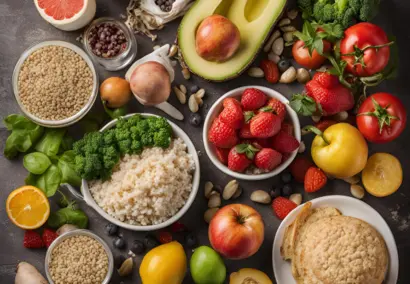
Therapeutic Foods: Nature’s Remedies for GERD
Certain therapeutic foods can provide an extra layer of relief by soothing the stomach, calming inflammation, improving digestion, and supporting a healthy mucus lining and you can consider including them in your GERD diet plan.
Harness the power of these natural remedies to enhance the healing process and find relief from GERD symptoms.
Consider incorporating the following therapeutic foods into your 7-day GERD diet plan:
- Bone broth: Rich in collagen, which may support gut lining health and integrity.
- Turmeric: Possesses potent anti-inflammatory properties that can soothe the digestive tract.
- Aloe vera juice: Known for its soothing properties and potential to reduce inflammation.
- Papaya: Contains digestive enzymes like papain that aid in breaking down food.
- Marshmallow root and slippery elm: Traditionally used for their mucilage content, which can help coat and soothe the digestive tract.
- Ginger: Contains natural anti-inflammatory properties that can help reduce inflammation in the esophagus and stomach.
The Best Teas for GERD Disease
Incorporating soothing beverages into your 7-day GERD diet plan can provide an additional layer of comfort and healing.
Teas, in particular, offer a variety of benefits for those with GERD, ranging from anti-inflammatory properties to promoting mucus production.
Here are some of the best teas for soothing GERD symptoms to consider including your your GERD diet plan:
- Chamomile tea: Known for its calming and anti-inflammatory properties.
- Marshmallow root tea: Soothes and protects, easing acid reflux discomfort.
- Licorice tea: Increases mucus production and exhibits anti-inflammatory effects.
- Fennel tea: May help soothe the digestive tract and alleviate symptoms of reflux and bloating.
- Roasted dandelion tea: Supports the production of digestive fluids and enzymes.
How to Cure Gerd Permanently Naturally
Gastroesophageal reflux disease (GERD) can often be managed effectively through natural lifestyle and dietary modifications.
While it’s important to note that “curing” GERD permanently may not always be possible, the following strategies can help alleviate symptoms and promote long-term relief:
1. Dietary Adjustments
- Avoid Trigger Foods: Identify and avoid foods and beverages that trigger GERD symptoms. These may include spicy foods, citrus fruits, chocolate, caffeine, and fatty or fried foods.
- Smaller, More Frequent Meals: Consuming smaller, more frequent meals rather than large meals can reduce the likelihood of acid reflux.
- Maintain a Healthy Weight: Excess weight can contribute to GERD symptoms. Managing weight through a balanced diet and regular exercise can be beneficial.
2. Lifestyle Changes
- Elevate the Head of the Bed: Raising the head of your bed by 6 to 8 inches can help prevent stomach acid from refluxing into the esophagus while sleeping.
- Avoid Tight Clothing: Tight clothing, especially around the waist, can exacerbate GERD symptoms by putting pressure on the abdomen.
- Quit Smoking: Smoking can contribute to GERD symptoms by relaxing the muscle that controls the opening between the esophagus and stomach.
3. Stress Management
- Mindfulness and Relaxation Techniques: Stress and anxiety can exacerbate GERD symptoms. Practices such as meditation, deep breathing, and yoga can help reduce stress and potentially alleviate symptoms.
- Regular Exercise: Moderate exercise can help with weight management and reduce stress. Avoid vigorous exercise right after meals.
4. Herbal Remedies
- Ginger: Ginger has been traditionally used to aid digestion and reduce nausea. It may also have some benefit in managing GERD symptoms.
- Chamomile: Chamomile tea may have a soothing effect on the digestive tract and is sometimes used to relieve gastrointestinal conditions.
- Apple Cider Vinegar: Some people find relief by taking a small amount of apple cider vinegar diluted in water before meals.
- Licorice Root: Licorice root can help increase the mucus coating of the esophageal lining, reducing the effects of stomach acid. Deglycyrrhizinated licorice (DGL) supplements are available.
- Slippery Elm: Slippery elm can help coat and soothe the digestive tract. It is available in powder, capsule, and lozenge forms.
5. Sleep Hygiene
- Establish a Regular Sleep Schedule: Go to bed and wake up at the same time every day, even on weekends. This helps regulate your body’s internal clock.
- Adequate Sleep: Aim for 7-9 hours of restful sleep each night to support your body’s natural healing processes.
- Avoid Lying Down After Meals: Wait at least two to three hours after eating before lying down or going to bed to allow food to digest properly.
- Sleep on Your Left Side: Sleeping on your left side can help reduce reflux symptoms by keeping the stomach below the esophagus, making it harder for acid to rise.
Resources
- GERD Diet: Foods to Avoid
- Acid Reflux Diet
- GERD Diet foods to limit or avoid
- Dietary Intake in relation to the risk of GERD Disease
- Dietary factors to consider for GERD Disease
Conclusion
Embarking on a 7-day GERD diet plan is a transformative journey towards reclaiming control over your digestive well-being.
By including GERD-friendly foods and avoiding foods that trigger GERD symptoms in your GERD diet plan, you’ll be able to manage GERD disease and symptoms.
Remember, while the path to relief may require patience and perseverance, the rewards of a symptom-free life are well worth the effort.
Whether you’re seeking relief from persistent heartburn or striving to prevent long-term complications, a 7-day GERD diet plan can be the catalyst for lasting change.
- 7-day low-sodium diet meal plan
- High alkaline foods
- High fiber foods
- Foods to avoid while on Saxenda
- 7-day low FODMAP meal plan
- 7-day meal plan for low potassium diet
- Does Ozempic need to be refrigerated?
- How to make sea moss gel
- Is corn good for weight loss?
- 7-day meal plan for cancer patients
- Foods to avoid with pituitary tumor
- 17 foods to avoid for new breastfeeding moms
- 6 week plan Ozempic weight loss results
- 7 foods to avoid with UTI
- Food to avoid while taking Contrave
- How much is Ozempic without insurance?
- 7-day endometriosis diet plan
FAQs
Are eggs ok for GERD?
Yes, eggs are generally considered safe for individuals with GERD as they are low in acid and fat. However, the preparation and portion size of eggs can impact how well they are tolerated by someone with GERD.
What are the worst foods for a GERD diet plan?
The worst foods for a GERD diet plan include whole milk, high-fat meats, fried eggs, pastries, salsas, orange juice, grapefruit juice, coffee, cocoa, alcoholic beverages, chocolate, peppermint, spicy foods, fatty foods, and raw onion or garlic.
What foods neutralize stomach acid immediately?
Bananas, non-citrus fruits, oatmeal, lean proteins, whole grains, nuts and seeds, yogurt, healthy fats, and ginger are known to help neutralize stomach acid immediately and alleviate symptoms of acid reflux.
Is bread good for acid reflux?
Whole-grain bread is generally considered better for acid reflux compared to white bread because it contains more fiber, provides essential nutrients, and is lower in fat which helps regulate digestion and reduce the risk of acid reflux.
What is a GERD diet plan?
A GERD diet plan focuses on reducing symptoms like heartburn, acid reflux, and indigestion by avoiding foods that trigger these symptoms and incorporating foods that are gentle on the stomach and esophagus.
